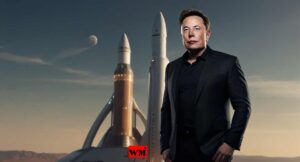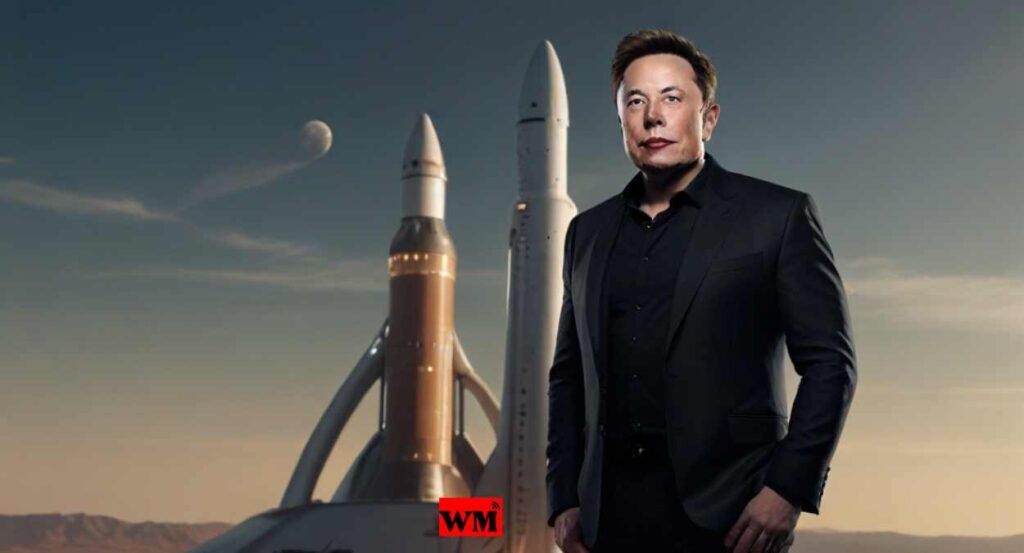
Elon Musk’s Audacious Vision for SpaceX’s Starship and Mars Colonization
SpaceX’s Towering Ambition: Starship and the Quest for Mars
In a recent update, Elon Musk, the visionary founder of SpaceX, laid out the company’s audacious plans for Starship, the world’s largest rocket, and its pivotal role in the grand endeavor of establishing a permanent human presence on Mars(Mars colonization) . With unwavering determination, Musk outlined a future where humanity transcends its single-planet existence and embarks on an interplanetary journey that could secure our species’ survival and pave the way for unprecedented exploration and discovery.
Starship: A Behemoth Poised for Interplanetary Travel
At a staggering 500 feet (150 meters) tall, the future iterations of Starship will dwarf even the current colossal system atop the Super Heavy rocket. Elon Musk envisions each launch costing a mere $3 million, an astonishingly low figure compared to the $9.5 million (adjusted for inflation) price tag of a Falcon 1 rocket launch in 2004. This dramatic reduction in costs, coupled with Starship’s unparalleled payload capacity, could revolutionize space travel and make interplanetary missions more economically feasible than ever before.
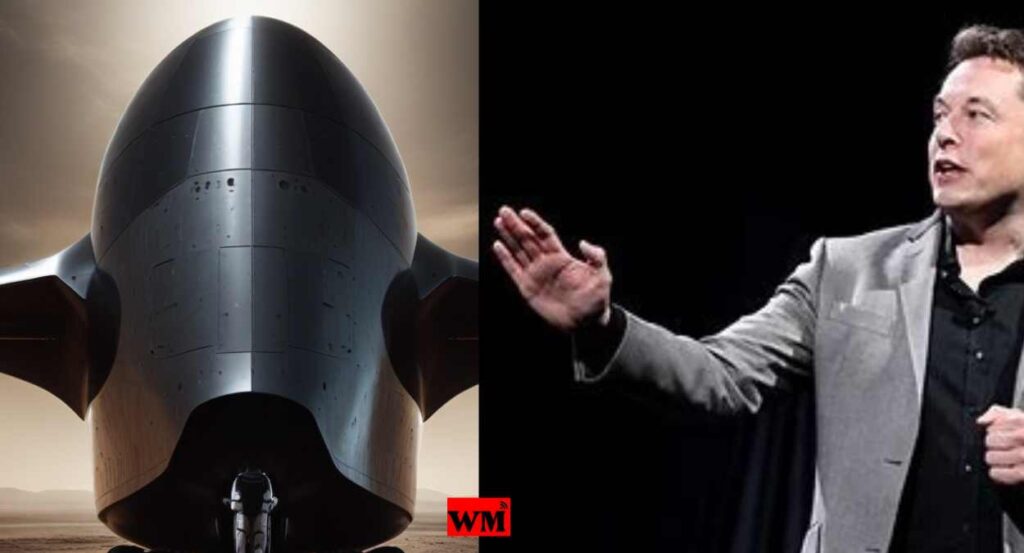
“These are sort of unthinkable numbers,” Musk said during the Starship update. “Nobody ever thought that this was possible, but we’re not breaking any physics to achieve this. So this is within the bounds, without breaking physics. We can do this.”
Reusability: The Key to Affordable Space Exploration
One of the driving forces behind SpaceX’s ambitious plans is the company’s unwavering commitment to reusability. Elon Musk highlighted SpaceX’s impressive track record of 327 successful Falcon series launches, with 80% of those involving reused boosters – a critical factor in reducing costs. This year alone, SpaceX is expected to launch an astounding 90% of the total orbital mass sent into space, outpacing even China’s 6% contribution.
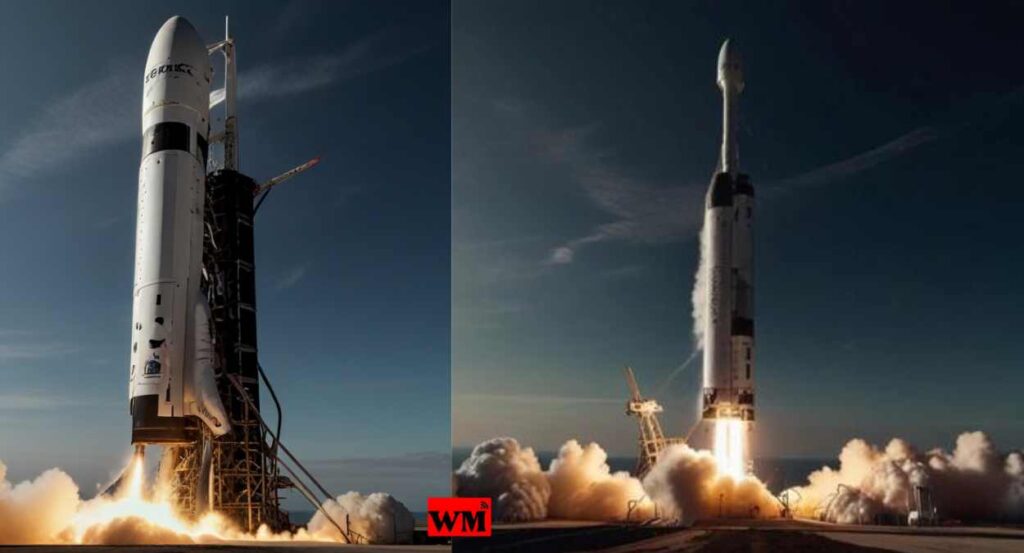
The company’s relentless pursuit of reusability extends to the Super Heavy booster and Starship’s upper stage. During the upcoming fourth Starship test flight, tentatively scheduled for May, SpaceX aims to land the booster on a “virtual tower” in the Gulf of Mexico, paving the way for future attempts to catch the booster mid-air using the massive launch tower’s “chopstick-like” mechanisms.
As for Starship‘s upper stage, Musk’s goal is to achieve a controlled splashdown before attempting land-based recoveries in Texas as early as next year. “We do not want to rain debris over Mexico or the U.S.,” he stated, underscoring SpaceX’s commitment to safety and environmental responsibility.
Artemis and the Lunar Stepping Stone
While Mars colonization remains SpaceX’s ultimate objective, the company’s Starship system plays a pivotal role in NASA’s Artemis program, which aims to establish a sustainable human presence on the Moon. Musk acknowledged the importance of Starship’s capabilities, such as orbital refueling and lunar-specific variants without heat shields or flaps, for the success of the Artemis missions.
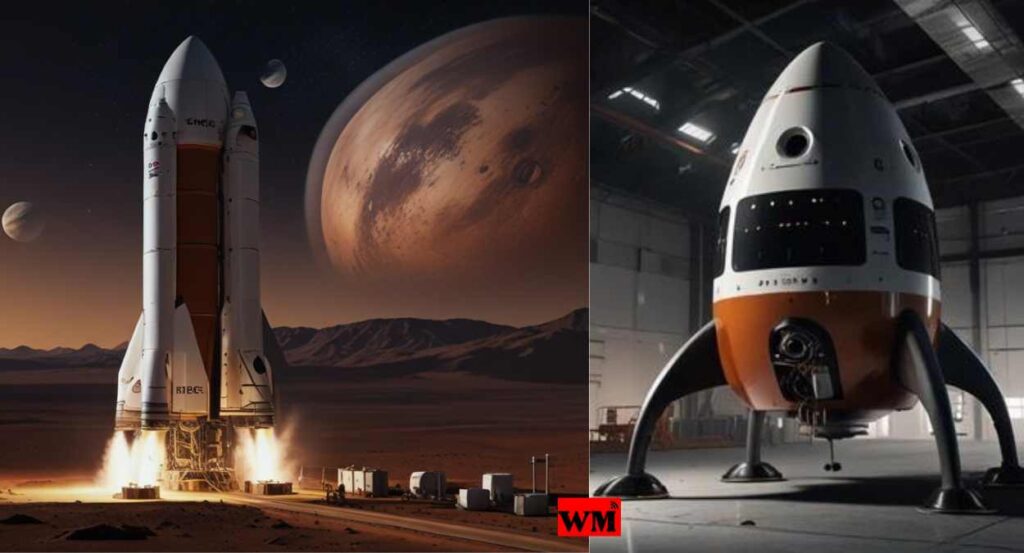
“This will … be very important for the Artemis program for the NASA to get back to the moon,” Musk said, envisioning a “Moon Base Alpha” with specialized ships designed for lunar travel.
A Roadmap to Mars colonization : Incremental Milestones and Ambitious Goals
Elon Musk’s speech outlined a series of incremental milestones and ambitious long-term goals that could pave the way for a sustained human presence on the Red Planet. In the near term, SpaceX plans to construct six additional Starship vehicles by the end of 2024, with a new rocket factory slated to come online in 2025, further accelerating production.
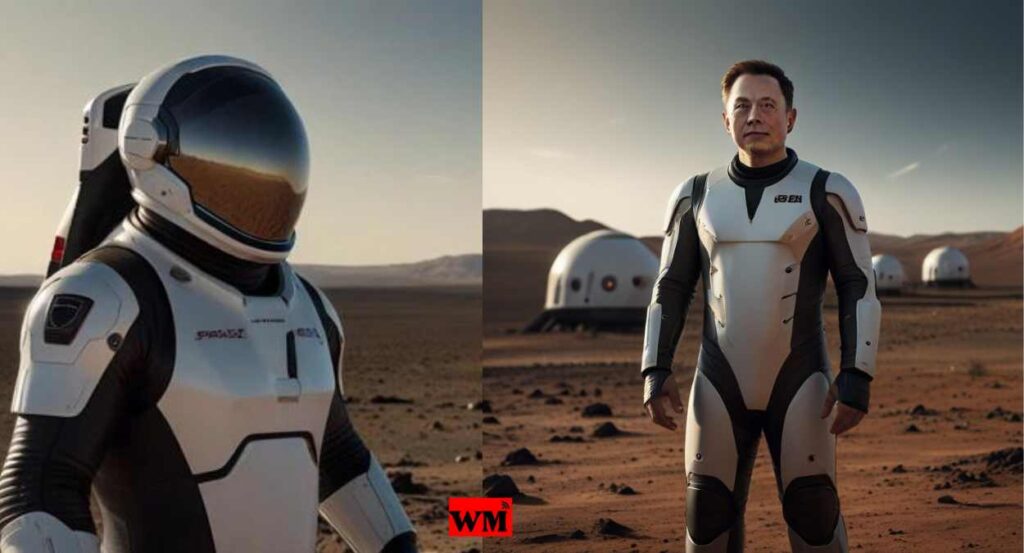
Looking ahead, Musk detailed plans for “Starship 2” and “Starship 3” – larger variants capable of launching 100 tons and 200 tons or more, respectively, to low-Earth orbit in fully reusable mode. These advancements, coupled with a reduction in the number of required refueling missions, could dramatically increase the payload capacity for Mars-bound missions.
Ultimately, Musk’s vision is to establish a self-sustaining Mars colonization ( civilization on Mars) , complete with a population of approximately one million people and the necessary infrastructure to mine, build, and grow resources on the Red Planet. To achieve this ambitious goal, he estimates that roughly 10 launches per day would be required, dispatching a fleet of hundreds of vehicles to Mars during the optimal launch windows that occur every 26 months.
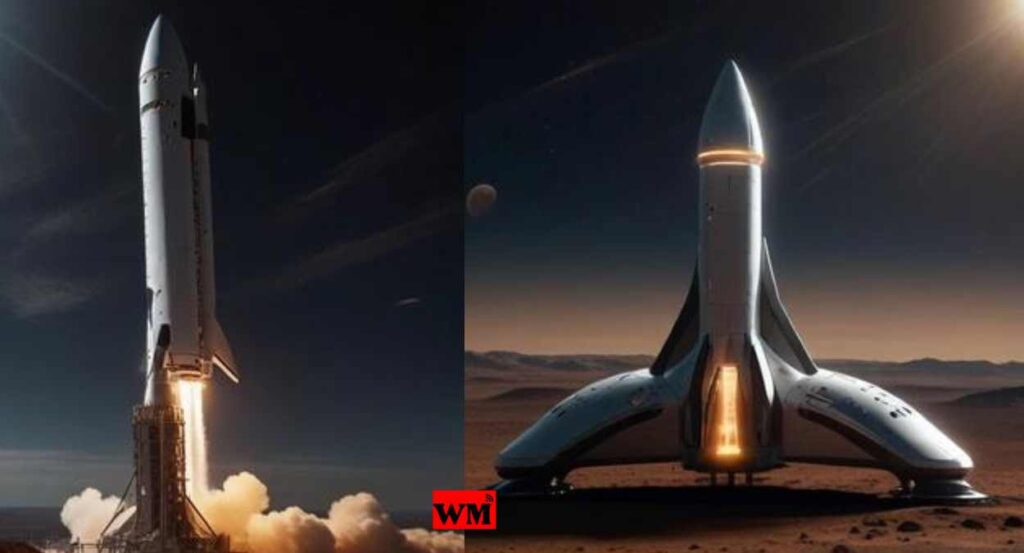
The Ethics of Multiplanetary Expansion
While Elon Musk’s ambitions are undoubtedly awe-inspiring, they have also sparked ethical debates surrounding the wisdom of expanding human civilization beyond Earth. Critics argue that replicating our deeply flawed society on other planets could lead to the perpetuation of injustices, cruelty, and environmental degradation on a larger scale.
Proponents, however, counter that establishing a multiplanetary presence is a moral imperative to ensure the long-term survival and prosperity of humanity. They cite the existential risks posed by global catastrophes, such as nuclear war or asteroid impacts, as compelling reasons to pursue interplanetary Mars colonization as a safeguard against extinction.
Musk himself subscribes to the philosophical framework of longtermism, which emphasizes the ethical importance of positively impacting the lives of countless future generations. From this perspective, failing to pursue space exploration and Mars colonization would be an “astronomical waste” of potential human flourishing and happiness.
Overcoming Challenges and Mitigating Risks
While the technical and logistical challenges of establishing a permanent human presence on Mars ( Mars colonization) are daunting, Musk and his team at SpaceX remain undeterred. By leveraging cutting-edge engineering, reusable rocket technology, and an unwavering commitment to innovation, they aim to overcome these obstacles and mitigate the associated risks.
Environmental concerns, such as the potential impact of Starship launches on the ecologically sensitive areas near SpaceX’s Starbase facility, remain a point of contention. Musk has stated that the company will work diligently to minimize its ecological footprint and adhere to environmental regulations.
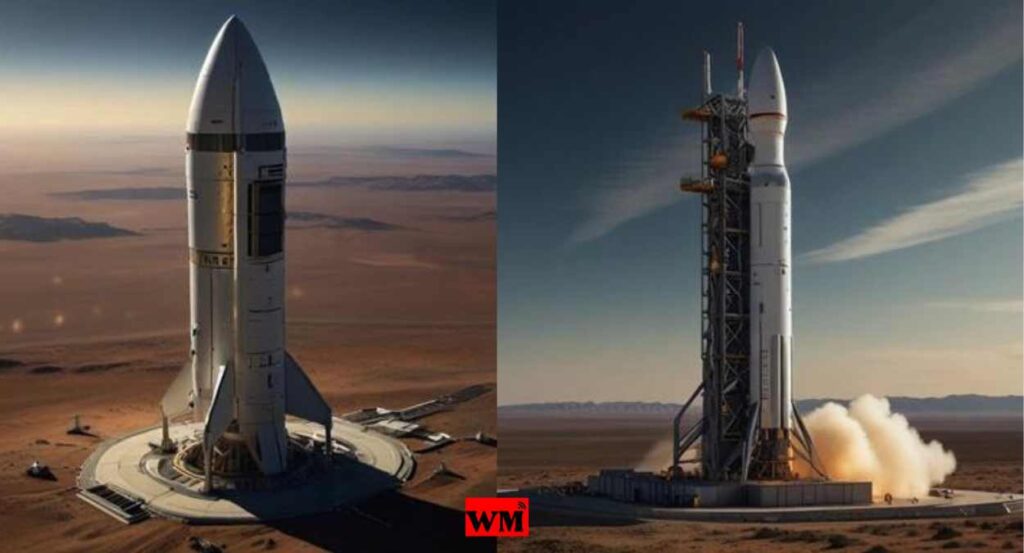
The Endless Frontier: Inspiring a New Generation
Beyond the technical and scientific achievements, Elon Musk’s vision for SpaceX’s Starship and Mars colonization has the potential to inspire a new generation of dreamers and explorers. Just as the Apollo missions captured the imagination of millions and sparked a surge of interest in science and technology, the prospect of humans setting foot on another world could reignite a sense of wonder and curiosity about the boundless possibilities that lie beyond Earth’s confines.
As humanity contemplates its place in the cosmos and grapples with the challenges of sustainable existence on our home planet, Musk’s audacious vision reminds us of the indomitable spirit of exploration that has driven our species to push the boundaries of what was once thought impossible.
Frequently Asked Questions (FAQs)
Q. What is Starship, and how does it differ from previous SpaceX rockets?
A. Starship is SpaceX’s fully reusable super-heavy-lift launch vehicle, designed for interplanetary travel and eventual Mars colonization. It is significantly larger and more powerful than previous SpaceX rockets, standing at an impressive 500 feet (150 meters) tall in its future iterations and boasting a payload capacity of up to 200 tons or more to low-Earth orbit.
Q. How will SpaceX achieve such low launch costs for Starship?
A. SpaceX plans to dramatically reduce launch costs for Starship by maximizing reusability. The company aims to land and reuse both the Super Heavy booster and Starship’s upper stage, leveraging its experience with reusable Falcon boosters. Additionally, Musk estimates that each Starship launch could cost as little as $3 million, a fraction of the cost of previous rocket launches.
Q. What role does Starship play in NASA’s Artemis program?
A. Starship has been selected by NASA as the lunar lander for the Artemis 3 mission, which aims to return humans to the lunar surface. Starship’s capabilities, such as orbital refueling and specialized lunar variants without heat shields or flaps, are crucial for the success of the Artemis program and the establishment of a sustained lunar presence through projects like “Moon Base Alpha.”
Q. How does Elon Musk plan to establish a self-sustaining civilization on Mars?
A. Musk envisions sending a fleet of hundreds of Starship vehicles to Mars during optimal launch windows, carrying millions of tons of cargo and eventually transporting around one million people to the Red Planet. This massive undertaking would require an estimated 10 launches per day and would provide the necessary resources and infrastructure for settlers to mine, build, and grow their own resources, enabling a self-sustaining Martian civilization.
Q. What are the ethical considerations surrounding Mars colonization?
A. While proponents argue that establishing a multiplanetary presence is a moral imperative to ensure humanity’s long-term survival and prosperity, critics contend that replicating our flawed society on other planets could perpetuate injustices, cruelty, and environmental degradation on a larger scale. Additionally, the philosophical framework of longtermism, which Musk subscribes to, emphasizes the ethical importance of positively impacting the lives of countless future generations.
Q. How does SpaceX plan to address environmental concerns related to Starship launches?
A. SpaceX acknowledges the potential environmental impact of Starship launches, particularly in the ecologically sensitive areas near its Starbase facility. The company has stated its commitment to minimizing its ecological footprint and adhering to environmental regulations. Specific measures, such as implementing sustainable practices and utilizing eco-friendly propellants, may be explored to mitigate the environmental impact of Starship operations.
Q. What is the potential impact of Musk’s vision on inspiring future generations?
A. Musk’s audacious vision for SpaceX’s Starship and Mars colonization has the potential to inspire a new generation of dreamers and explorers, much like the Apollo missions captured the imagination of millions and sparked a surge of interest in science and technology. The prospect of humans setting foot on another world could reignite a sense of wonder and curiosity about the boundless possibilities that lie beyond Earth’s confines.
Conclusion
Elon Musk‘s vision for SpaceX’s Starship and the Mars colonization is a testament to the boundless ambition and relentless pursuit of innovation that has propelled humanity’s greatest achievements in space exploration. While the challenges are formidable, the potential rewards are equally immense – from establishing a self-sustaining multiplanetary civilization to unlocking new frontiers of scientific discovery and human potential.
As SpaceX continues to make strides toward these audacious goals, the world watches with bated breath, eagerly anticipating the day when Starship’s towering presence graces the Martian skies, ushering in a new era of interplanetary exploration and human ingenuity. Whether this vision ultimately succeeds or not, it serves as a powerful reminder that the limits of our species are defined not by the boundaries of our current knowledge but by the depths of our collective imagination and unwavering determination to push forward into the unknown.
Also Read:
Google Pixel Watch 2024 Update: Now Pixel Watch Just Got a Superpower, Know How?
Cyber Slavery: India’s Daring Rescue from Cambodia’s Web of Deceit, Dismantles Organized Crime Ring!
The Alarming Rise of Neurological Disorders: A Global Health Crisis
Google’s Urgent Warning: Is Your Google Drive Data Really Safe?
From Barbados to India: Rihanna’s Trailblazing Journey Continues, Conquering the World





























